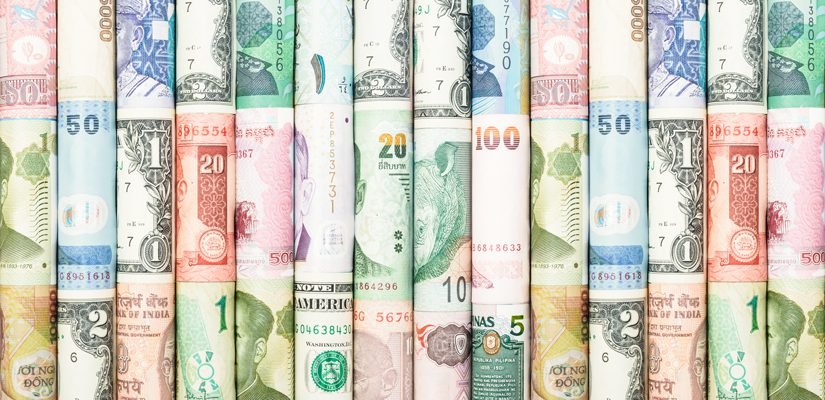New Delhi: A sustained downturn in demand across important markets, such as the US and the European Union, was the main cause of India’s merchandise exports’ nearly 9% decrease in February, the third contraction in the current fiscal.
Meanwhile, imports decreased in value for the third consecutive month as Indian importers cut down on their spending due to lower prices, bringing the trade gap down to its second-lowest level of the current fiscal year.
Notably, China’s exports decreased 6.8% in January and February compared to the same two months last year, once again as a result of weak global demand.
India’s exports of gems and jewellery, cotton and man-made yarn, carpets, coffee, plastic and linoleum all decreased as a result of the prognosis for a recession and high inflation in the advanced nations.
India’s exports of goods fell by 8.88% in February after growing by 1.4% in January, reaching a four-month low of $33.88 billion.
The trade deficit for the month was $17.43 billion as imports dropped by 8.1% to an 18-month low of $51.3 billion, according to figures issued by the ministry of commerce and industry on Wednesday.
“We have been able to restrict our imports, which was previously a concern, and we will be able to fulfil our overall trade objective. Services exports are also performing very well. When comparing February’s numbers to January’s, the trade imbalance has decreased as well. A lot of work was put into this direction. We studied ways to limit imports that were not absolutely necessary, according to Sunil Barthwal, the commerce secretary.
The administration plans to release its much-anticipated international trade strategy by month’s end, taking effect on 1 April, in an effort to increase outbound shipments.
Positively, non-oil exports increased sequentially, while the speed of the year-over-year contraction slowed down in February 2023 compared to the previous month. Following the Union Budget, gold imports increased again, despite printing substantially lower than in the previous year. We anticipate the trade imbalance to be between $18 and $20 billion in the current month, according to Aditi Nayar, chief economist and head of Research & Outreach at ICRA Ltd.
We estimate that the current account deficit reached a height of $36 billion in Q2 FY2023, and we expect a significant decline to $24 billion in Q4 FY2023 and $12-15 billion in Q4 FY2023, according to Nayar.
The trade imbalance, or difference between exports and imports, increased from $16.34 billion in the previous month but decreased by 6.7% from the same month last year. Santosh Kumar Sarangi, director general of international trade, reported that by the end of January, exports of mobile phones had surpassed 67,333 crore.
This comes after the government introduced incentives connected to production to promote the manufacture of electronic goods.
In response to a query, Sarangi stated that payments for oil imports from Russia have been made in a variety of currencies, including Dirham and Euro.
Since dealing in Yuan is not prohibited, it might also incorporate Yuan. The exporters can use any convertible currency, Sarangi continued.
According to a Mint story, Indian exporters have raised the problem with India’s commerce ministry, arguing that accepting yuan payments will only serve to boost the Chinese yuan and defeat the goal of the Indian government to internationalise the rupee.
Exports of goods totaled $405.9 billion between April and February, a 7.5% increase over the same time last year. In the current fiscal year 2022–23, the government expects exports to reach $440 billion, an increase of over 4% from the previous year.
The government removed export taxes on steel and iron ore in November to stop the decrease in outgoing shipments and the expanding current account deficit, but iron ore exports rose 51.37% in February compared to the same month last year. Exports of electrical goods increased by 43.02% in the month while exports of engineering items fell 9.68%. Exports of finished clothing fell by 3.18% this month while those of gems and jewellery increased by 25.30%.
The non-oil, non-gems, and non-jewelry exports fell by 6.38% to $25.36 billion, and the non-petroleum, non-jewelry imports fell by 2% to $31.05 billion in February, both showing a slowdown in industrial activity.
The current account deficit is influenced by gold imports, which fell by 44.92% to $ 2.63 billion in February 2023 from $ 4.78 billion in February 2022. Comparable declines were seen in silver imports, which fell from $ 0.48 billion in February 2022 to $ 0.01 billion in February 2023, according to a statement from the trade ministry.
“Engineering products exports have seen a decreasing trend and registered negative growth in seven out of the first 11 months of the current fiscal, amid a difficult external climate and weak demand from major markets.
For the previous few months, exports of iron and steel, aluminium, copper, and other non-ferrous metals have significantly decreased, according to EEPC India Chairman Arun Kumar Garodia.
According to Gadoria, 2023 could be a challenging year for manufacturers of engineering goods as the failure of two US banks and weak development in some European regions could dampen market mood and further hurt demand.
He added that there is hope that domestic demand, driven by increased public investment in the infrastructure sector, will somewhat offset the decline in export growth.
The government announced corrected inverted duty for a number of sectors, including toys, mobile phone parts, and bicycles, in the Union Budget last month to support domestic manufacturing in response to India’s exports and current account balance being negatively impacted by a lack of external demand. (GI) items, khadi, and coir.
Due to a greater trade deficit in the second quarter, India’s current account deficit increased to a nine-year high of 4.4% of GDP, highlighting the impact of sluggish global export demand.
The nation’s CAD for the first six months of the current fiscal year was 3.3% of GDP.
With increased global uncertainty, the World Trade Organization predicted in October that the growth of global commerce would drop to 1% in 2023 from 3.5% in 2022.
Economists warned that a full recovery in exports would depend on a rise in demand in important markets.
Source: Team CurrecyVeda





